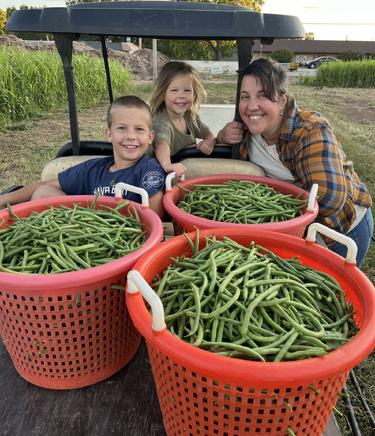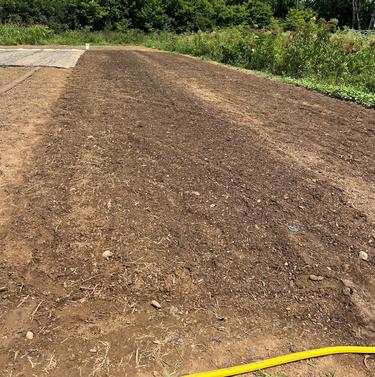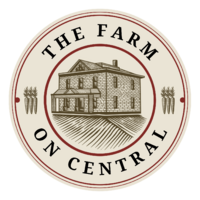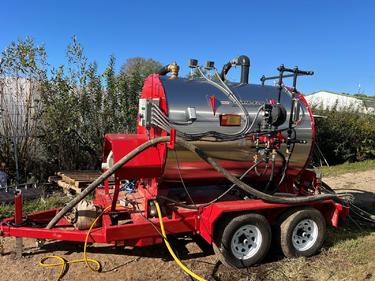A Farm on Central Service
Soil Steamer Rental
Serving Midwestern small farmers & tobacco leaf producers.
✓ Day & week rates
✓ Farm consultations
Why are farmers turning to soil steaming?
"It's extremely effective. For the soil-borne diseases, it's good at suppressing them."
David Paulk, Sassafras Creek Farm
"Between 160-180 degrees, most of my weed seeds are going to be killed."
Andre Cantelmo, Heron Pond Farm
"People are seeing a great yield bump from the steaming process."
Becky Maden, Singing Cedars Farmstead

Steam the Soil, Reap the Benefits
Soil steaming has been around since the late 1800s, with a steamer first patented in the US in 1911. But when pesticides began to be mass-produced, soil steaming faded from popularity.
However, in regenerative agriculture, steaming is making a comeback.
Here at Farm on Central we use soil steaming to suppress weeds and soil pathogens, leading to larger, healthier yields. We've found soil steaming to be one of the most effective methods of weed control, with minimal interference to the soil structure.
Our steamer is available to rent to nearby farms in the Midwest. Pickup is at the Farm on Central, near Dayton Ohio.
Long-Lasting Weed Suppression
✅ Minimal soil disturbance. Steaming preserves soil structure and macrofauna, making it ideal for no-till farms.
✅ Saves time & money. Spend far less time on weeding and cultivation.
✅ 100% chemical-free. Safe for organic farms and leaves no residue.
✅ Kills weed seeds, soil-borne pests, and disease pathogens. Although steaming is primarily for weed control, it also can also minimize the risk of diseases.
✅ Prepares beds faster for transplanting or direct seeding. Knock out many beds in a single day.
✅ Safe, proven, and effective. Well-tested for both vegetable farming and tobacco steaming.


Soil Steamer Applications
For Small-Scale Vegetable Farmers
Soil steaming eliminates weeds and diseases in no-till systems without chemicals or heavy tillage.
Reduces weed seed – Steaming heats the seed zone enough to kill most surface weed seeds, drastically cutting back on weed emergence.
Suppresses pathogens – High temperatures suppress soil-borne diseases and nematodes, helping protect your yield without fumigants.
Preserves soil health – Because there’s no tillage, soil structure and mycorrhizae remain intact while weeds and pathogens are eliminated.
For Tobacco Leaf Producers
Barn steaming (leaf conditioning) softens cured wrapper leaves for easier handling and higher-quality output.
Restores pliability – Steam hydration adds gentle, even moisture back into cured leaves, reducing tearing.
Lowers mold risk – Controlled steaming prevents uneven wetting and lowers mold risk compared to other rehydration methods.
Protects quality – Less breakage, better grades, and a more consistent product for your buyers.
FAQ
New to soil steaming? No problem!
Refer to the questions on the right, or watch the video for a demonstration of the steamer. We also provide an info packet with full instructions with the rental.
How does soil steaming work?
The steam generator contains a water tank and heating component to produce steam, which is injected into the soil under a tarp or hood. The heat sanitizes the soil without chemicals, creating a clean growing environment for your next crop.
The steam generator contains a water tank and heating component to produce steam, which is injected into the soil under a tarp or hood. The heat sanitizes the soil without chemicals, creating a clean growing environment for your next crop.
What are the benefits of soil steaming for vegetable beds?
Steaming eliminates weeds and pathogens in one pass—no need for herbicides or fumigants. It also loosens the soil, improves tilth, and helps crops establish faster. Farmers often see stronger germination, more uniform stands, and fewer weed flushes for several years after steaming.
Steaming eliminates weeds and pathogens in one pass—no need for herbicides or fumigants. It also loosens the soil, improves tilth, and helps crops establish faster. Farmers often see stronger germination, more uniform stands, and fewer weed flushes for several years after steaming.
How deep does the steam penetrate the soil?
Typically, steam penetrates 2-4 inches deep—enough to kill weed seeds and pathogens in the root zone. For deeper sterilization, the steaming duration can be extended.
Typically, steam penetrates 2-4 inches deep—enough to kill weed seeds and pathogens in the root zone. For deeper sterilization, the steaming duration can be extended.
How long does it take to steam a bed?
That depends on the bed size and soil type. On average, a 100 x 24 foot section takes about 3-5 hours to steam. Heavy clay soils take longer than sandy or loamy soils. Steaming when the soil is saturated takes longer.
Once complete, you can replant in as little as 8 hours, depending on moisture and temperature.
That depends on the bed size and soil type. On average, a 100 x 24 foot section takes about 3-5 hours to steam. Heavy clay soils take longer than sandy or loamy soils. Steaming when the soil is saturated takes longer.
Once complete, you can replant in as little as 8 hours, depending on moisture and temperature.
What equipment do I need to use the rental steamer?
We provide the following:
Sioux 50 steamer
4 steam hoses
4 steam socks
4 end clips
4 side chains (in buckets)
2 end chains (in buckets)
1 yellow water feed hose
1 Tarp 24x100
To operate the steamer you will need...
A water source at 40psi (hose or tank)
A truck or power source to move the steamer
20amp breaker or generator (we provide 50ft of electrical cords) Generator rental is extra.
We provide the following:
Sioux 50 steamer
4 steam hoses
4 steam socks
4 end clips
4 side chains (in buckets)
2 end chains (in buckets)
1 yellow water feed hose
1 Tarp 24x100
To operate the steamer you will need...
A water source at 40psi (hose or tank)
A truck or power source to move the steamer
20amp breaker or generator (we provide 50ft of electrical cords) Generator rental is extra.
Soil steamer specs
The Sioux Model SF-50 Steam-Flo (OSSR50D-TM) is an ASME-coded, scotch marine boiler with a 50 Boiler HP (37.3 kW) capacity, producing 1,725 lbs/hr (782 kg/hr) of steam at a maximum operating pressure of 15 PSI (1.03 BAR). It features an oil-fired (diesel/kerosene) forced draft burner with flame safeguard, operating on 115V/1PH/60Hz with a 13-amp draw and a 35' power cable. Safety components include an inlet water feeder with flow valve, exhaust high-temperature limit switch, low water level switch, pressure switch, high limit pressure switch with manual reset, and an ASME-rated pressure relief valve. The unit has a 4" NPT outlet, 12" exhaust, and 1" fiberglass insulation wrap. Mounted on a tandem axle, highway-ready trailer with heavy-duty axles, leveling jack, 15" pneumatic tires, electric brakes with breakaway kit, safety chains, 2 5/16" ball coupler, LED taillights, and a 120-gallon fuel tank. It complies with ASME CSD-1, UL508A, and CAN/CSA-C22.2 No. 14-10 standards and is registered with the National Board of Boiler and Pressure Vessel Inspectors. The boiler measures 116"L x 90"W x 87"H and weighs approximately 5,300 lbs.
The Sioux Model SF-50 Steam-Flo (OSSR50D-TM) is an ASME-coded, scotch marine boiler with a 50 Boiler HP (37.3 kW) capacity, producing 1,725 lbs/hr (782 kg/hr) of steam at a maximum operating pressure of 15 PSI (1.03 BAR). It features an oil-fired (diesel/kerosene) forced draft burner with flame safeguard, operating on 115V/1PH/60Hz with a 13-amp draw and a 35' power cable. Safety components include an inlet water feeder with flow valve, exhaust high-temperature limit switch, low water level switch, pressure switch, high limit pressure switch with manual reset, and an ASME-rated pressure relief valve. The unit has a 4" NPT outlet, 12" exhaust, and 1" fiberglass insulation wrap. Mounted on a tandem axle, highway-ready trailer with heavy-duty axles, leveling jack, 15" pneumatic tires, electric brakes with breakaway kit, safety chains, 2 5/16" ball coupler, LED taillights, and a 120-gallon fuel tank. It complies with ASME CSD-1, UL508A, and CAN/CSA-C22.2 No. 14-10 standards and is registered with the National Board of Boiler and Pressure Vessel Inspectors. The boiler measures 116"L x 90"W x 87"H and weighs approximately 5,300 lbs.

